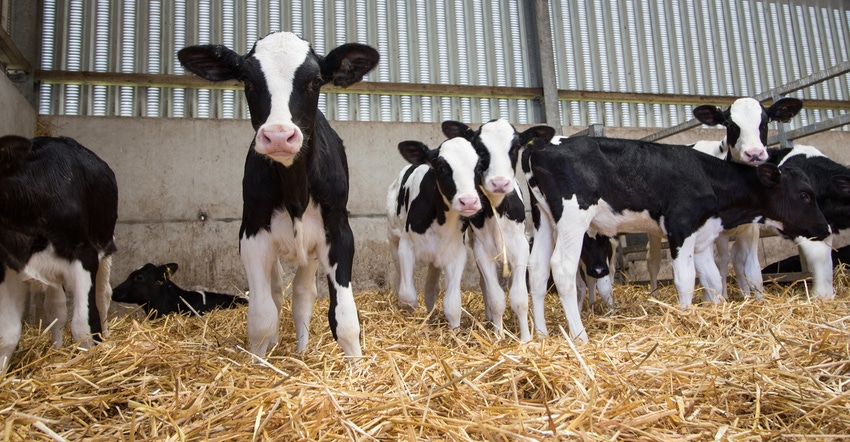
Bovine respiratory disease plays a major role in death losses in weaned dairy calves. Prevention is the key to BRD management on a dairy farm.
According to the Journal of Dairy Science, BRD is estimated to affect 22% of preweaned dairy calves in the U.S. and is a leading cause of preweaning mortality in dairy calves. The complex includes both viral and bacterial diseases and presents when calves are stressed or inhale high levels of dust or toxins.
It affects the lower respiratory tract and lungs resulting in pneumonia, or the upper respiratory tract causing rhinitis, tracheitis or bronchitis.
Curt Vlietstra, veterinarian with Boehringer Ingelheim, says vaccines do a “pretty good job” of preventing the viral pathogens or at least “keeping them down to a dull roar” if given at the appropriate time. However, he warns vaccines are hit or miss when bacterial pathogens cause BRD.
“We really only have vaccines that are effective against one and maybe two of the bacterial causes,” he explains. He recommends giving vaccines before stressful moments for dairy calves such as weaning or commingling. “It would be vaccinating a week to two weeks prior to these types of events.”
Benefits to vaccinating against BRD
Losing a replacement dairy heifer to BRD costs the farmer initially. But there is a residual cost to those heifers who are not treated and still make it into the herd.
Vlietstra says farmers can see decreased growth, which delays the onset of puberty. “Now you’re waiting to breed longer, which means it’s going to take longer to get that dairy heifer into the herd and start creating you a profit,” he says. When she does make it into the herd, he points out, she gives less milk.
“That’s when you start to think about vaccines,” he says. “The ROI on vaccines that cost you $1 to $2 to $3 is pretty easy to achieve.” Still, he recommends multiple doses of the vaccine.
Vlietstra points out that vaccines don’t last forever. “At some point in time, the immunity from a vaccine, even if the animal does mount a really good response, is going to start to decline.” He adds that not all animals respond to this type of preventative treatment.
If at least 80% of the dairy animals mount an adequate immune response and then herd immunity kicks in, the need for follow-up vaccines may not be there. But farmers should work with their veterinarian to develop sound protocols that use a mix of medical treatment and animal husbandry practices.
The goal, Vlietstra says, is to vaccinate enough “without making pincushions out of calves.” He recommends dairy replacement heifers receive at least three doses of live viral vaccine before their first insemination. “If that happens, we can expect the immunity to last through the pregnancy until they get into the milking herd,” he says.
Animal husbandry prevention of BRD
According to University of Kentucky researchers, there are many management practices farmers can use to prevent BRD. Here is a short list of recommendations:
Offer colostrum. Dairy farmers should feed 4 quarts of colostrum to calves as soon after birth as possible but within the first six hours of life. A second feeding of 2 to 3 quarts should be fed to calves eight hours later.
Offer milk. Milk or reconstituted milk replacer should be mixed and offered on a consistent basis. Feedings should be done at the same time each day, with the same amount of milk or milk replacer, which will reduce stress in the calf. Don’t mix feeding equipment between sick and healthy calves. Keep them separate.
Provide fresh air. Ventilation decreases the airborne bacterial counts, minimizing the risks of infection. It also decreases the concentration of ammonia and dust in the air. U.K. researchers found that ventilation systems should provide air exchanges equal to 15 cubic feet per minute. During the winter, the ventilation system must perform four air turns per hour, and during the summer a minimum of 30 turns per hour.
Give them room. The higher the number of animals in a small area, the greater the chances of spreading BRD among calves. When dealing with heifers that were raised individually, keeping the number of animals in the group lower is essential. After weaning, these heifers will learn how to compete with others, which often leads to increased stress, ultimately increasing the cases of BRD. Keeping the weaned heifers in small groups is essential since BRD accounts for 46.5% of the death losses in weaned heifers.
“The goal,” Vlietstra says, “is to prevent as much as possible and treat as little as possible.”
About the Author(s)
You May Also Like






